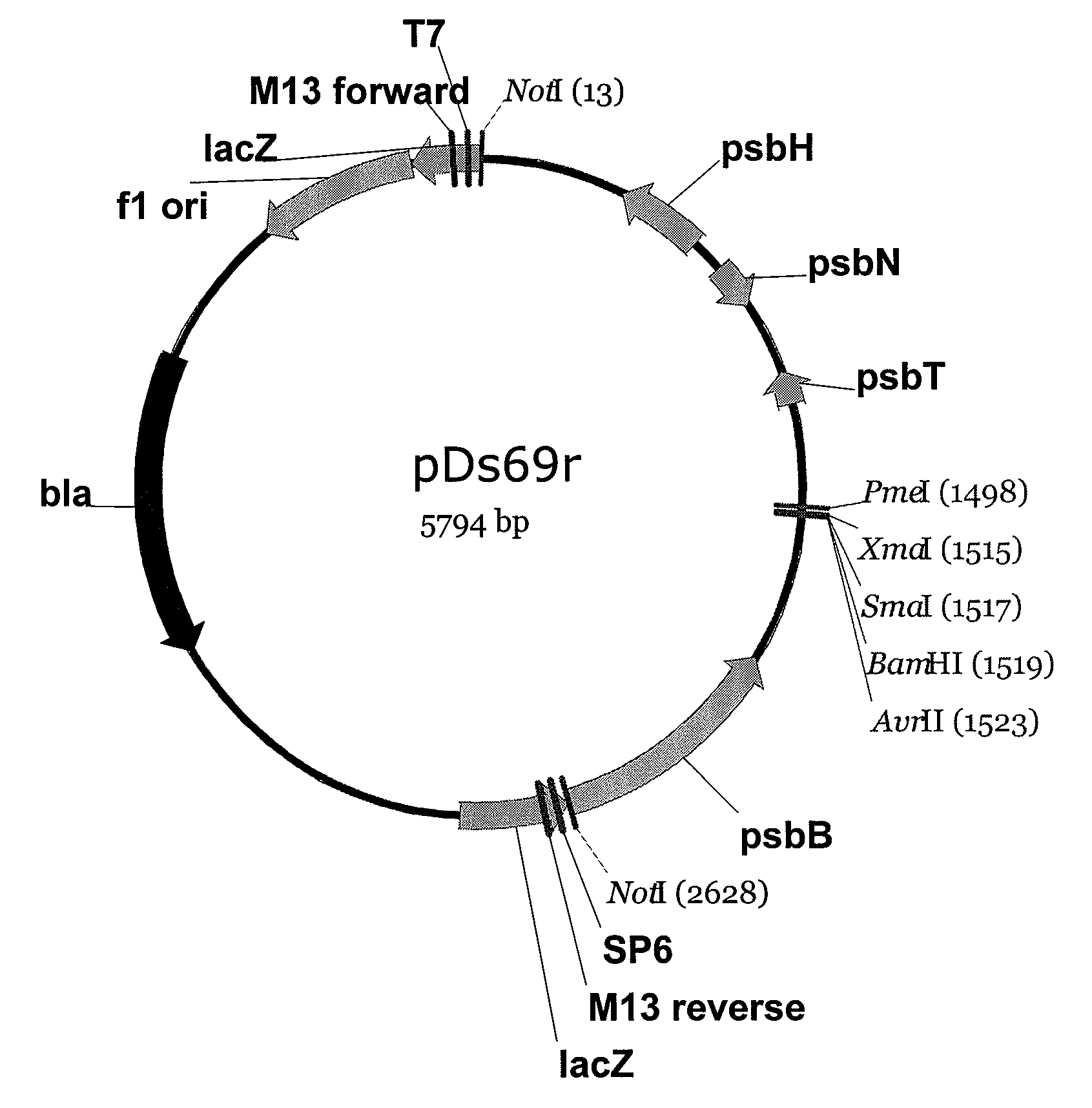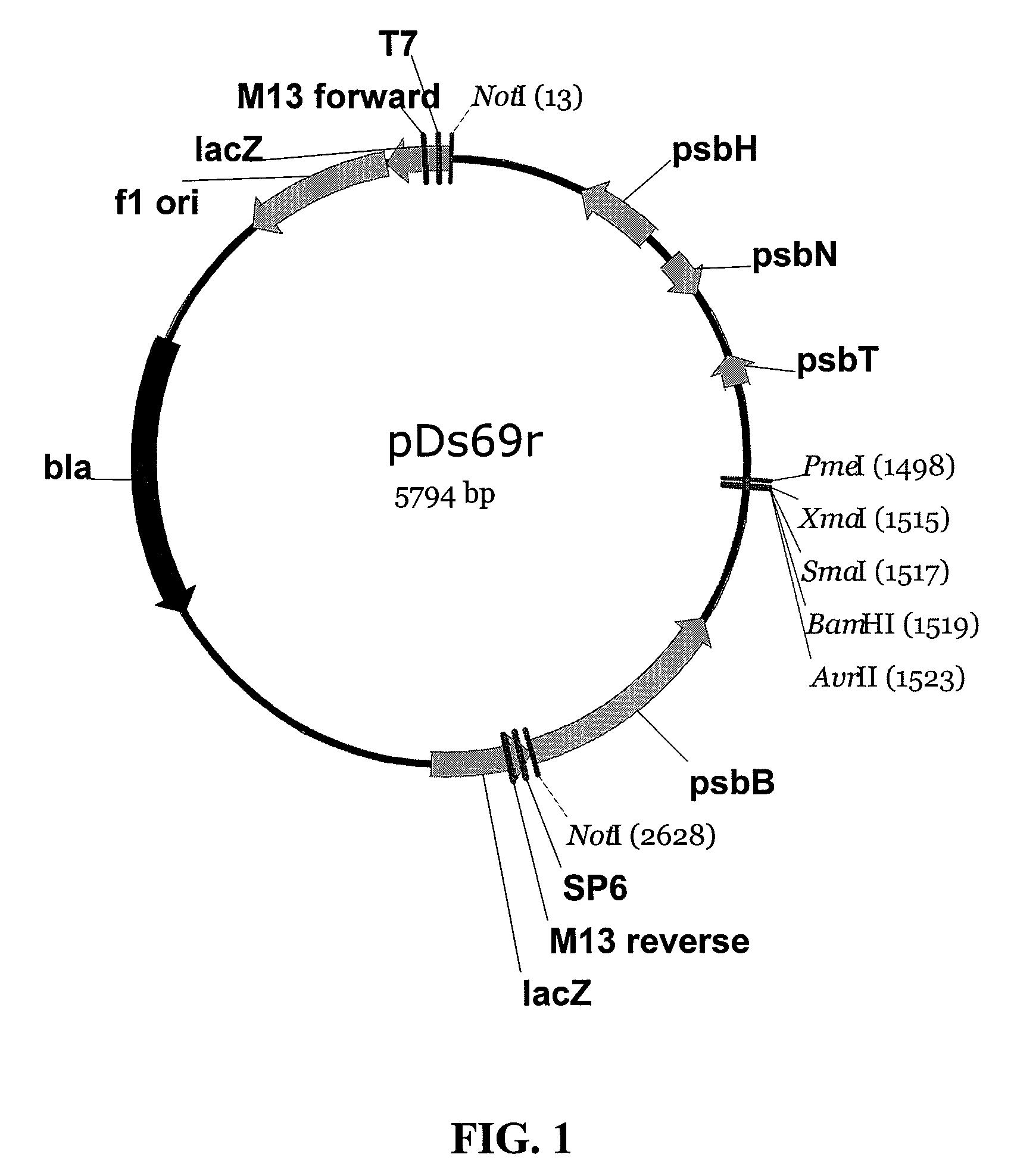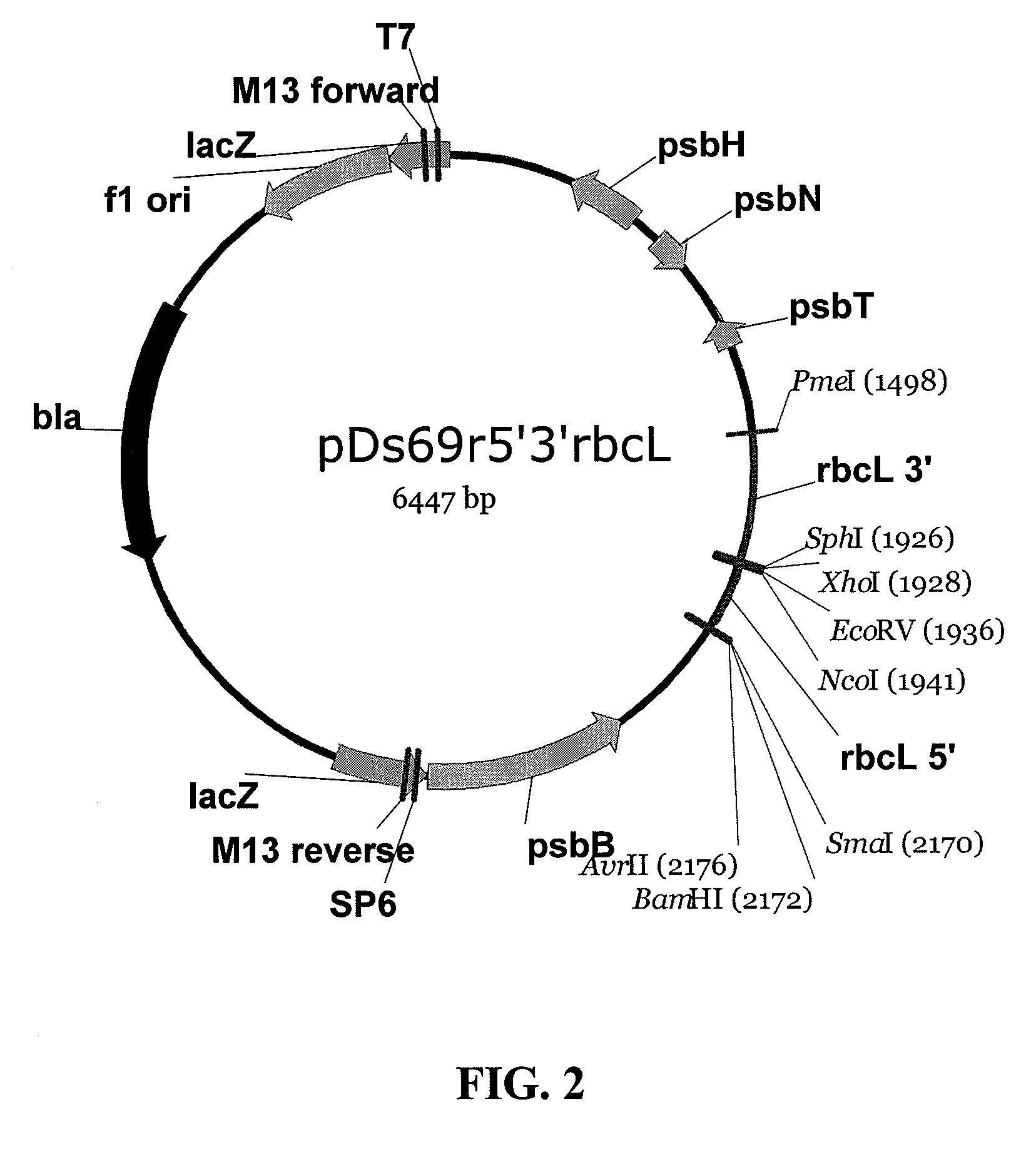Expression of nucleic acid sequences for production of biofuels and other products in algae and cyanobacteria
a technology of algae and cyanobacteria, applied in the field of expression of genes of interest in unicellular organisms, can solve the problems of not providing teachings, enabling the use of a multitude of regulatory elements,
- Summary
- Abstract
- Description
- Claims
- Application Information
AI Technical Summary
Benefits of technology
Problems solved by technology
Method used
Image
Examples
example 1
[0129]This example illustrates one possible method for cloning and sequencing of the Dunaliella chloroplast genome.
[0130]In this example, Dunaliella is grown in inorganic rich growth medium containing 1 M NaCl at room temperature (20-25° C.). Four liters of culture is grown under illumination with white fluorescent light (80 umol / m2sec) with a 12 hour light: 12 hour dark photoperiod. Algal cells are collected in the late logarithmic phase of growth by centrifugation at 1000×g for 5 min in 500 mL conical Corning centrifuge bottles. The cell pellet is washed twice with fresh growth medium to remove cell surface materials that cause clumping of cells.
[0131]The cell pellet is resuspended in ice-cold isolation medium (330 mM sorbitol, 50 mM HEPES, 3 mM NaCl, 4 mM MgCl2, 1 mM MnCl2, 2 mM EDTA, 2 mM DTT, 1 mL / L proteinase inhibitor cocktail) to a concentration equivalent to 1 mg chlorophyll per mL of isolation medium. The chlorophyll concentration is estimated by adding 10 uL of the chloro...
example 2
[0142]This example illustrates one possible method for cloning and sequencing of the Tetraselmis spp. chloroplast genome.
[0143]Host sequences are preferred for construction of transformation vectors for Tetraselmis spp. Cells are cultured, chloroplasts isolated and lysed, and nucleic acids purified. These consecutive steps are non-obvious for this walled unicellular algae that is recalcitrant to disruption by most organic solvents and robust to high pressure and for which isolated chloroplast DNA has not been reported. Thus, a novel series of steps had to be discovered. The chloroplast isolation method for Tetraselmis adapts certain early elements from a protocol used for isolation of the chloroplast envelope from the wall-less Dunaliella tertiolecta in a clade distinct from Tetraselmis (Goyal et al., Canadian Journal of Botany 76: 1146-1152; 1998, which is incorporated herein by reference in its entirety). The chloroplast lysis and purification of plastid DNA method for Tetraselmis...
example 3
[0156]This example illustrates one possible method for preparation of backbone vectors for targeted integration of DNA segments in the chloroplast genome.
[0157]Backbone vectors are desired for targeted integration of DNA segments in the chloroplast genome. In one embodiment of this example, chloroplast DNA sequences derived from sequencing the genome of Dunaliella spp are used to produce chloroplast transformation vector pDs69r (FIG. 1). PCR primer 5′caggtttgcggccgcaagaaattcaaaaacgagtagc3′ (SEQ ID NO: 83) and 5′aagacccgggatcctaggtcgtatattttcttccgtatttat3′ (SEQ ID NO: 84) are used to amplify a fragment of Dunaliella salina chloroplast DNA including the psbH, psbN, and psbT genes and adding a NotI restriction site (5′CCATGG3′) to one end of the DNA molecule and restriction sites for AvrII (CCTAGG), BamHI (GGATCC), SmaI (CCCGGG) to the other end. Amplification is performed with a Pfx proof reading enzyme (Accuprime Pfx, Invitrogen, Carlsbad, Calif.) from a chloroplast DNA preparation o...
PUM
| Property | Measurement | Unit |
|---|---|---|
| Pressure | aaaaa | aaaaa |
| Pressure | aaaaa | aaaaa |
| Molecular weight | aaaaa | aaaaa |
Abstract
Description
Claims
Application Information
 Login to View More
Login to View More - R&D
- Intellectual Property
- Life Sciences
- Materials
- Tech Scout
- Unparalleled Data Quality
- Higher Quality Content
- 60% Fewer Hallucinations
Browse by: Latest US Patents, China's latest patents, Technical Efficacy Thesaurus, Application Domain, Technology Topic, Popular Technical Reports.
© 2025 PatSnap. All rights reserved.Legal|Privacy policy|Modern Slavery Act Transparency Statement|Sitemap|About US| Contact US: help@patsnap.com



